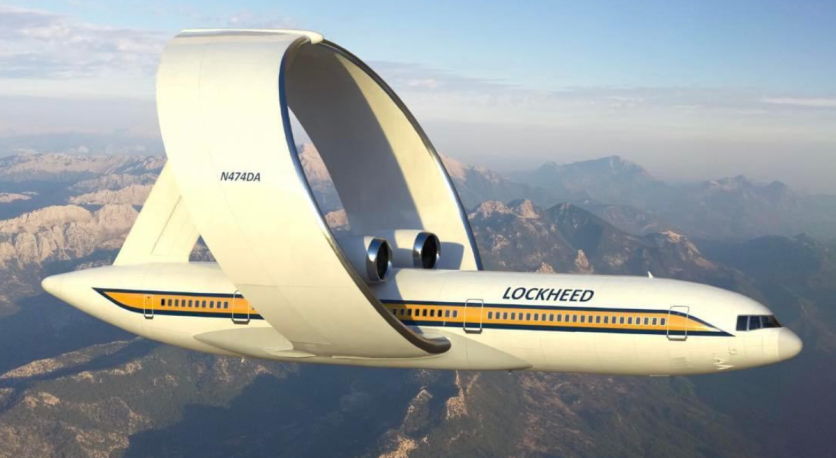The 1980s marked an era of unconventional thinking in aviation design, giving birth to groundbreaking concepts that aimed to revolutionize commercial air travel.
Among these was an aircraft with a unique and futuristic circular wing design, pushing the boundaries of what was considered possible. The so-called ring-wing plane was born-but never successfully flew.
Visionary Design For Lockheed Ring-Wing Plane

According to The Sun, the extraordinary aircraft boasted an impressive wingspan of 170 feet, with a distinctive circular wing that extended 75 feet in height. The circular wing, featuring a 27-degree arch connecting to the tail, set this aircraft apart from conventional designs.
The reason why Lockheed arrived with this design is to enhance fuel conservation during short-haul commercial flights, eliminating the need for high-altitude travel. Despite its unorthodox appearance, this aircraft accommodated up to 120 passengers and offered remarkable aerodynamic advantages.
Due to its continuous circular wing, the aircraft generated significantly more lift, resulting in reduced fuel consumption and a lighter load. Furthermore, it exhibited improved stability against crosswinds. Its narrower width also allowed for the use of specialized runways, reducing space requirements.
Related Article : Lockheed Martin's U-2 Dragon Lady Avionics Tech Takes First Flight
The Unfulfilled Potential
Despite the promising advantages of this innovative design, the scifi-themed aircraft never completed its maiden flight, according to The Travel Bible. The challenges lay in its unique manufacturing process, making it considerably more expensive than conventional planes due to a lack of prior production experience.
Additionally, the Lockheed ring-wing plane's innovative lift generation system led to an unexpected increase in parasitic drag, which offset the fuel savings, essentially nullifying its fuel-efficiency benefits.
Inspired by History
The inspiration for this pioneering circular wing design harkened back to early aircraft concepts in France. Some of the earliest aircraft experiments in France featured circular closed wings. These experiments included an aircraft with large circular wings at both the front and rear, deviating from the flat wings commonly seen today.
However, these initial concepts faced limitations, struggling to achieve substantial flight distances. They were, in essence, experimental bunny hops rather than sustained flights.
While the circular-wing aircraft of the 80s remained an intriguing concept, modern aviation continues to push boundaries with innovative designs. One such example is a supersonic aircraft currently in development, promising to redefine commercial travel.
Designed by Oscar Viñals from Barcelona, this spaceship-like aircraft combines futuristic aesthetics with sustainability by using electricity as its power source. With a top speed of around 1,150 mph, it offers ultra-luxury flights for up to 300 passengers.
Moreover, NASA is actively researching a supersonic hydrogen plane with the goal of achieving twice the speed of the Concorde. If successful, this Mach 4 passenger jet could reduce the travel time between New York and London to a mere 1.5 hours, making it four times faster than conventional commercial aircraft.
In retrospect, the circular wing aircraft of the 80s may not have taken flight, but it remains a testament to the innovative spirit that continues to shape the future of aviation.

ⓒ 2025 TECHTIMES.com All rights reserved. Do not reproduce without permission.




